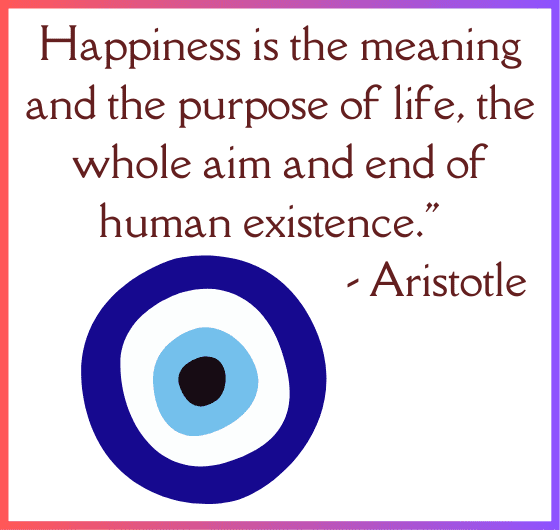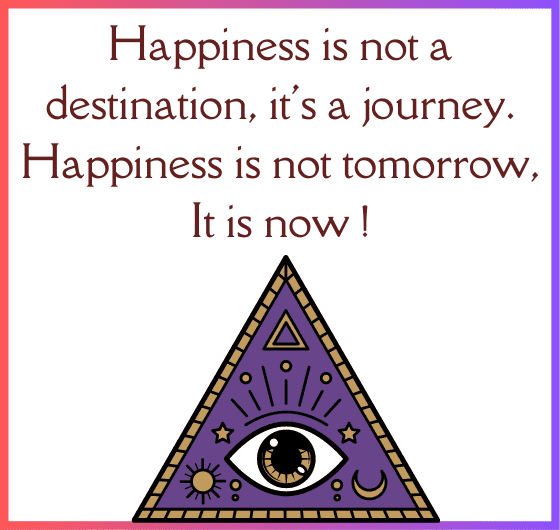Ancient Indian traditions hold immense wisdom for finding lasting happiness. These traditions passed down through generations, offer valuable insights into inner peace and contentment. Practices such as yoga, meditation, and mindfulness are key components of these traditions, guiding individuals toward a harmonious and joyful life for happiness in Indian Traditions.
By embracing principles like non-attachment and gratitude, we learn to let go of negativity and appreciate the present moment.
Through these ancient teachings, we discover that true happiness comes from within, not from external circumstances.
** Ancient Indian traditions hold valuable wisdom for finding lasting happiness.
** These traditions, rooted in a rich cultural heritage, span thousands of years.
** Teachings of yoga, meditation, and mindfulness offer insights into inner peace and contentment.
** Principles of non-attachment and gratitude are central to these traditions.
** By embracing these practices, individuals can cultivate self-awareness, compassion, and connection.
Therefore, by exploring and incorporating these traditions into our lives, we can unlock the power of lasting happiness and lead to a more fulfilling existence.

The significance of Ayurveda in promoting happiness in Indian traditions
The aim of Ayurveda is to maintain the health of the healthy and to cure the disease of the diseased” – Charaka Samhita
Ayurveda, the ancient Indian system of medicine, is deeply rooted in the promotion of physical, mental, and emotional well-being. Here are some ways Ayurveda contributes to happiness in Indian traditions:
** Ayurveda emphasizes the importance of balancing the mind, body, and spirit to achieve optimal health and happiness.
** By promoting healthy habits such as a balanced diet, regular exercise, and stress management techniques, Ayurveda helps prevent physical and mental health problems that can impede happiness.
** Ayurveda recognizes the individuality of each person and encourages customized treatment plans, allowing individuals to tap into their unique needs and preferences for optimal well-being.
** Moreover, Ayurvedic practices such as meditation and yoga promote mindfulness and self-awareness, key components of happiness and emotional well-being.
** Overall, Ayurveda offers a holistic approach to health and happiness, reflecting the interconnectedness of physical, mental, and emotional health in Indian traditions for happiness.
“Happiness is not in the mere possession of money; it lies in the joy of achievement, in the thrill of creative effort.” – Franklin D. Roosevelt
The Role of Vedic Practices in Fostering Happiness in Indian Traditions
Vedic practices, derived from ancient Hindu scriptures, have been an integral part of Indian traditions for thousands of years. Here are some ways Vedic practices contribute to happiness in Indian traditions:
** The vedic practices such as chanting mantras, performing fire ceremonies, and practicing yoga and meditation help create a sense of inner peace and calm, promoting emotional well-being.
** The practice of gratitude and giving thanks, an important aspect of Vedic philosophy, helps individuals focus on the positive aspects of their lives and promotes feelings of contentment and happiness.
** Vedic astrology, based on the belief that the position of celestial bodies can affect a person’s life, provides guidance and insights for making positive life choices and can enhance happiness and well-being.
** Moreover, by emphasizing the interconnectedness of all living beings and promoting a sense of unity and compassion, Vedic practices foster a sense of community and social support, an important aspect of happiness in Indian traditions.
“Happiness is the meaning and the purpose of life, the whole aim and end of human existence.” – Aristotle
The connection between Indian wedding traditions and happiness
The traditional Indian wedding is a grand affair filled with rituals and Celebrations and is considered a major life event. It is also believed to bring happiness and good fortune to the couple and their families. Here are some key points on the connection between Indian wedding traditions and happiness:
** Rituals like the Haldi, Mehendi, and Sangeet bring families and friends together in a joyous atmosphere.
** The exchange of vows and the Pheras symbolizes the commitment and love between the couple, bringing them emotional fulfillment.
** Blessings from elders, the exchange of gifts, and the elaborate feast are seen as auspicious and create a sense of happiness and abundance.
** Also, the wedding also marks the beginning of a new phase of life, bringing hope and anticipation for the future.
All of these elements make Indian weddings a truly special and joyful occasion, promoting happiness and emotional well-being.
Happiness is not a destination, it’s a journey. Happiness is not tomorrow, it is now.

The Impact of Indian home decor and Design on Happiness
“Your home should tell the story of who you are, and be a collection of what you love.” – Nate Berkus
Sure, here is a blog article on “The impact of Indian home decor and design on happiness” with the keyword “Indian traditions for happiness” in bullet points:
Indian home decor and design have been known to create a sense of warmth and comfort, promoting happiness in households. Here are some ways in which Indian home decor can impact happiness levels:
** Color psychology: Indian homes are known for their vibrant colors, and these hues can have a positive impact on one’s mood.
** Cultural significance: Indian decor often includes traditional motifs and designs that reflect cultural beliefs and values, creating a sense of connection and belonging.
** Natural elements: Incorporating natural elements like plants and natural materials can create a calming and peaceful atmosphere.
** Functionality: Indian homes often prioritize functionality and practicality, creating a sense of ease and efficiency in daily life.
Therefore, by incorporating these elements into their homes, individuals can create a space that promotes emotional well-being and happiness.
The relationship between Indian food traditions and happiness
Indian cuisine is not only flavorful and diverse, but it is also closely linked to happiness in Indian culture. Here are some ways in which Indian food traditions promote happiness:
** A variety of spices and flavors used in Indian cooking can stimulate the senses and uplift mood.
** Sharing meals with family and friends promotes a sense of community and togetherness, leading to emotional well-being.
** Traditional ingredients like turmeric, ginger, and ghee have been found to have anti-inflammatory and mood-boosting properties.
** The practice of mindful eating, where one savors each bite and appreciates the food, can promote a positive relationship with food and increase happiness.
Overall, Indian food traditions offer not only delicious meals, but also a connection to one’s culture and a path to happiness.
“Happiness is a butterfly, which, when pursued, is always just beyond your grasp, but which, if you will sit down quietly, may alight upon you.” – Nathaniel Hawthorne
The importance of giving gifts in Indian traditions and its effect on happiness
“The greatest gift you can give someone is your time, your attention, your love, and your concern.” – Joel Osteen
Giving gifts is an essential part of Indian culture that can bring joy and happiness to both the giver and the recipient. In Indian traditions, gifting is considered a way to express love, appreciation, and gratitude towards others.
The act of giving gifts is believed to strengthen relationships, promote harmony, and create positive energy.
Gifts are given on various occasions in India, including weddings, festivals, and other significant milestones. The type of gift given varies depending on the occasion and the relationship between the giver and recipient.
Also, giving gifts in Indian culture is not just about the material value of the gift but also the intention behind it.
The act of giving gifts has been shown to have a positive impact on the giver’s emotional well-being.
Studies have suggested that gift-giving can improve one’s mood, increase feelings of happiness and satisfaction, and reduce stress levels.
Furthermore, giving gifts can strengthen social connections, enhance self-esteem, and promote a sense of belongingness.
In conclusion, giving gifts in Indian culture is an integral part of promoting happiness, fostering positive relationships, and spreading joy.
In Indian culture, giving gifts is seen as an important way to express love and gratitude. It’s a tradition that is deeply rooted in the culture and is believed to bring happiness to both the giver and receiver.
Here are some reasons why giving gifts can contribute to happiness in Indian traditions:
>> It strengthens relationships and fosters a sense of community.
>> It promotes a sense of generosity and selflessness, which can enhance personal well-being.
>> It shows appreciation and gratitude for others, which can increase positive emotions and reduce stress.
>> It can create feelings of joy and excitement, which can elevate mood and promote happiness.
In conclusion, giving gifts in Indian traditions is not just a formality, but a way of fostering happiness and building strong relationships.
“The happiness you feel is in direct proportion to the love you give.” – Oprah Winfrey

The significance of festivals and celebrations in Indian traditions and happiness
“Festivals are the celebration of togetherness, of being one of the same breed. It’s a day to forget all the differences and negativity, and to embrace positivity and harmony” – Unknown
India is a country known for its colorful and joyous festivals and celebrations, and they play a significant role in promoting happiness in the Indian culture.
Here are some of the reasons why:
>> Festivals bring people together, fostering a sense of community and social connection.
>> They provide a break from daily routine and offer an opportunity to relax, have fun, and rejuvenate.
>> Festivals also provide a chance to express gratitude and celebrate life’s blessings.
>> They help preserve and promote traditional values and cultural heritage.
>> Participating in rituals and ceremonies during festivals can provide a sense of spiritual fulfillment and inner peace.
>> Festivals offer an opportunity to indulge in delicious food and treats, which can boost mood and happiness.
Overall, festivals and celebrations are an essential part of Indian traditions that help promote emotional well-being and happiness.
The Role of Storytelling in Promoting Happiness in Indian Traditions
Stories have power. They delight, enchant, touch, teach, recall, inspire, motivate, and challenge. They help us understand. They imprint a picture on our minds. Want to make a point or raise an issue? Tell a story.” – Janet Litherland
The art of storytelling has been an integral part of Indian culture for centuries. From the epics like Ramayana and Mahabharata to folk tales, storytelling has been used to pass on traditions, values, and beliefs from one generation to the next. But did you know that storytelling can also promote happiness in Indian traditions? Here’s how:
>> Storytelling helps people connect with each other and build relationships, leading to emotional well-being.
>> Listening to stories can help reduce stress and anxiety, promoting mental health and happiness.
>> Stories often contain important life lessons and morals, which can provide guidance and support in times of difficulty.
>> Storytelling can be a fun and engaging activity that brings people together and fosters a sense of community.
So, the next time you’re feeling down or want to connect with others, consider the power of storytelling in promoting happiness in Indian traditions.
“Happiness is not something you postpone for the future; it is something you design for the present.” – Jim Rohn
The Effect of Traditional Indian Dance and Music on happiness levels
Traditional Indian dance and music have been an integral part of Indian culture for centuries. These art forms are not only aesthetically pleasing, but have also been known to have a positive impact on one’s emotional well-being. Here are some ways in which traditional Indian dance and music can promote happiness:
>> Music and dance have been used for centuries in India as a means of expression and communication, which can help to alleviate stress and anxiety.
>> The rhythms and beats of Indian music can have a calming effect on the mind and body, helping to reduce stress levels.
>> Dance, on the other hand, is a great way to improve physical health, increase flexibility, and boost self-confidence, which can all contribute to greater happiness.
>> The social aspect of traditional Indian dance and music also provides opportunities for people to connect with others, fostering a sense of community and belonging.
Overall, the combination of music, dance, and community makes traditional Indian dance and music a powerful tool for promoting happiness in Indian culture.
“Happiness is a state of mind. It’s just according to the way you look at things.” – Walt Disney

The connection between Indian spirituality and happiness in Indian traditions
Indian spirituality is deeply rooted in ancient traditions and beliefs that emphasize the importance of living a meaningful and fulfilling life.
Happiness is considered an essential aspect of this journey, and Indian spirituality offers numerous tools to achieve it. Here are some ways in which Indian spirituality promotes happiness:
>> Meditation and yoga practices help to calm the mind and cultivate inner peace and contentment.
>> Practicing gratitude and expressing thankfulness for the blessings in life help to shift focus from negative to positive aspects.
>> Living a simple and balanced lifestyle based on ethical principles and virtues helps to cultivate a sense of purpose and meaning.
>> Services to others, such as volunteering or charitable work, promotes a sense of community and connectedness.
>> Belief in the interconnectedness of all living beings helps to cultivate compassion and empathy, which are essential for personal and collective well-being.
Overall, Indian spirituality offers a holistic approach to happiness that encompasses the mind, body, and soul.
Interesting facts: Indian traditions for happiness
>> India is known as the land of Yoga, which is a form of physical, mental, and spiritual exercise that is believed to promote health and happiness.
>> Indian festivals such as Diwali, Holi, and Dussehra are celebrated with great enthusiasm and are believed to bring joy and happiness to people’s lives.
>> Ayurveda, an ancient Indian system of medicine, emphasizes the importance of maintaining a balance between mind, body, and spirit for good health and well-being.
>> Moreover, the Indian practice of meditation has gained popularity around the world as a way to reduce stress, and anxiety, and improve overall happiness.
Short story on Indian traditions for Happiness
The Secret of Happiness: A Tale of Indian Traditions
In a small village nestled amidst verdant hills, there lived a young girl named Maya. Maya was known for her ever-present smile and radiant joy. Intrigued by her infectious happiness, the villagers approached her one day, seeking the secret to her unwavering bliss.
With a twinkle in her eyes, Maya shared the wisdom she had inherited from her ancestors – the Indian traditions for happiness. She revealed that her family had been custodians of ancient practices passed down through generations.
Maya explained that gratitude was at the core of Indian traditions for happiness. Every morning, she would bow to the rising sun, expressing heartfelt gratitude for the gift of a new day.
She would also express appreciation for the simple pleasures, like the gentle rustle of leaves or the fragrance of blooming flowers.
Another practice, she cherished was meditation. Maya would find a quiet spot under the banyan tree, close her eyes, and focus on her breath.
In those moments of stillness, she felt connected to something greater than herself, experiencing a profound sense of peace and contentment.
Maya also emphasized the importance of selfless service. According to Indian traditions, acts of kindness and compassion bring immense joy.
Maya would spend time volunteering at the village school, helping children discover the beauty of learning. Seeing their smiles and witnessing their growth filled her heart with immense happiness.
Word of Maya’s wisdom and the Indian traditions for happiness spread far and wide. People from neighboring villages flocked to learn from her, eager to experience the transformative power of these ancient practices.
As time passed, the village became a hub of happiness and well-being. The spirit of gratitude permeated every corner, meditation spaces blossomed, and acts of kindness became commonplace.
Maya’s smile grew even brighter, for she had found her purpose – to share the timeless wisdom of Indian traditions and bring happiness to the lives of others.
In conclusion, Maya’s story exemplifies the power of Indian traditions in cultivating lasting happiness. Through gratitude, meditation, and selfless service, one can discover a profound sense of joy and contentment.
By embracing these traditions and passing them on, we can create a ripple effect of happiness, transforming our own lives and the lives of those around us.
May we all find inspiration in the rich tapestry of Indian traditions and embark on a journey toward lasting happiness.
Riddles Make Life Better
Riddles related to Indian traditions for happiness:
Riddle 1: In ancient India, a practice embraced, Gratitude expressed with love and grace. Bow to the rising sun each day, For happiness, this is the way. What Indian tradition am I?
Riddle 2: Under the banyan tree, find your peace, Close your eyes, let worries cease. Focus on breath, find inner calm, This practice brings happiness like a healing balm. What Indian tradition am I?
Riddle 3: Kindness and compassion, the Indian way, Helping others, bringing joy each day. Selfless service, hearts filled with delight, This practice spreads happiness, shining bright. What Indian tradition am I?
Riddle 4: A festival of colors, vibrant and grand, Bringing people together across the land. Laughter, music, and joyous play, This tradition celebrates happiness in every way. What Indian tradition am I?
Riddle 5: A sacred thread, tied with love and care, Symbolizing protection and bonds we share. Respect for elders, a tradition passed on, This practice brings happiness from dusk till dawn. What Indian tradition am I?
These riddles aim to entertain and educate readers about Indian traditions for happiness. By engaging with these riddles, users can enhance their understanding and appreciation of the rich cultural heritage of India, while also enjoying a fun and interactive experience.
Answer 1: Morning Sun Salutation
Answer 2: Meditation
Answer 3: Seva (Selfless Service)
Answer 4: Holi Festival
Answer 5: Raksha Bandhan
What is the Indian Symbol of Happiness? Exploring the Vibrant World of Rangoli
India is a land of rich traditions and vibrant symbolism, and one of the beautiful Indian symbols associated with happiness is Rangoli.
Rangoli is a traditional art form that involves creating colorful patterns on the floor using vibrant powders, colored rice, flowers, or even colored sand.
Rangoli holds deep cultural significance and is widely practiced during festivals, weddings, and auspicious occasions in India. It is not merely a decorative art but a way of welcoming guests and invoking positive energy into the surroundings.
The intricate and symmetrical patterns of Rangoli are believed to bring good luck, prosperity, and happiness to homes.
The act of creating Rangoli is considered a form of meditation that helps in calming the mind and fostering a sense of peace and joy.
Rangoli designs vary from region to region in India, with each having its unique style and motifs. Common elements found in Rangoli include geometric shapes, flowers, birds, and religious symbols.
The colors used in Rangoli also hold symbolic meanings. Red signifies passion and energy, yellow represents positivity and joy, while white is associated with purity and peace.
The practice of Rangoli encourages creativity and fosters a sense of community. Families and neighbors come together to create intricate designs, sharing laughter, stories, and a sense of togetherness.
It is a joyous and interactive art form that brings people closer, celebrating the spirit of unity and happiness.
Rangoli is not just for decoration, it is also a way to bring happiness and good luck. It is often made during festivals, weddings, and other special occasions to invite positive energy into homes.
Creating Rangoli is like meditation. It helps calm the mind and brings a sense of peace and joy.
Families and neighbors come together to make these beautiful designs, enjoying each other’s company and having fun.
Rangoli is not limited to homes; it can be seen adorning the entrances of temples, public spaces, and even educational institutions.
Its presence signifies a warm welcome and a celebration of life’s vibrant colors.
Beyond its visual appeal, Rangoli embodies deeper symbolism. It represents the transient nature of life, reminding us to appreciate the beauty in impermanence and to live in the present moment.
Each Rangoli design is a unique expression of creativity, celebrating the diversity and individuality within us.
In conclusion, Rangoli is a mesmerizing Indian symbol of happiness that infuses joy, color, and positivity into the lives of people.
It is a reflection of India’s rich cultural heritage, fostering creativity, community, and a sense of togetherness.
Embracing the art of Rangoli not only adds beauty to our surroundings but also brings us closer to the essence of happiness found in the simple act of creation and the shared moments of celebration.

What can Symbolize happiness? Unlocking the Symbols of Happiness
Exploring Joyful Emblems: Happiness, the delightful feeling that brightens our days and lifts our spirits, can be symbolized in various ways. Let’s embark on a fun and exciting journey as we discover some of these symbols that represent happiness in simple and enjoyable terms.
1.. The Smiley Face: 😊 Imagine a round, yellow face with a big, wide smile. The smiley face is a timeless symbol of happiness and positivity. Its cheerful grin reminds us to find joy in the little things and approach life with a sunny disposition.
2. The Sun: ☀️ The sun, with its warm rays and radiant energy, is a symbol of happiness across cultures. It represents the light that illuminates our lives and fills us with warmth, optimism, and vitality.
Just like the sun brings light to the world, happiness brightens our hearts.
3. The Rainbow: 🌈 Ah, the magical rainbow! With its vibrant colors spanning the sky, it evokes a sense of wonder and joy.
Rainbows symbolize happiness, hope, and the beauty of life’s diverse experiences. They remind us that after a storm, there’s always a chance for something beautiful to emerge.
4. Flowers: 🌺🌼🌸 Nature’s colorful blooms hold a special place in symbolizing happiness. Whether it’s the joyful sunflower, the playful daisy, or the delicate cherry blossom, flowers represent the simple pleasures that bring happiness into our lives. Their beauty and fragrance awaken our senses and uplift our spirits.
5. The Laughing Buddha: 🤣🧘♂️ In many cultures, the Laughing Buddha is a symbol of happiness and good fortune. This jolly figure, often depicted with a big belly and a laughing expression, embodies the joy of living in the present moment.
The Laughing Buddha teaches us to find happiness through laughter, contentment, and inner peace.
As we explore these symbols of happiness, let’s remember that happiness is a personal and subjective experience. Different things can bring joy to different people.
It could be a favorite song, a warm embrace, a delicious treat, or the company of loved ones. The key is to find what truly brings a smile to your face and cherish those moments.
So, let these symbols serve as gentle reminders to embrace happiness in all its forms. From the simplicity of a smiley face to the enchantment of a rainbow, happiness surrounds us, waiting to be discovered and celebrated every day.
In conclusion, happiness can be symbolized by a myriad of cheerful emblems, including the smiley face, the sun, the rainbow, flowers, and the Laughing Buddha.
These symbols remind us to find joy in life’s little treasures, to bask in the warmth of positivity, and to appreciate the beauty that surrounds us. May they inspire you to seek happiness, embrace laughter, and cultivate a heart full of bliss.

